Cool as a Cuke: A Farmers Market Guide to Cucumbers
August 1, 2025
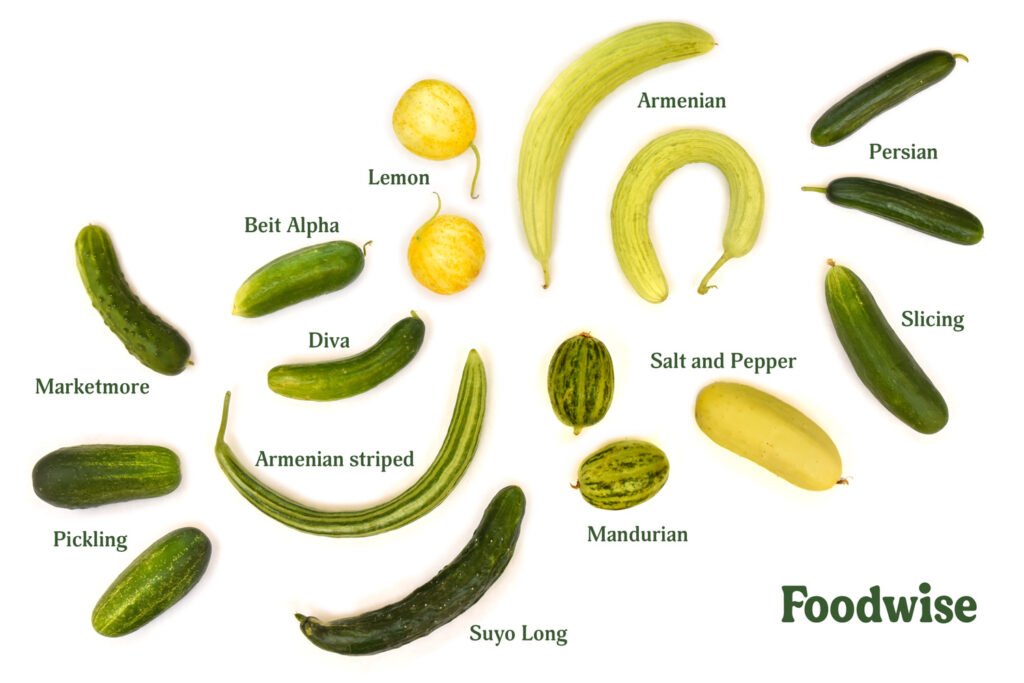
Have you ever wondered where the saying “cool as a cucumber” comes from? Whether it’s balancing out a spicy dish or enjoyed on its own as a healthy snack, the cucumber’s high water content gives any recipe a crisp and refreshing taste. Cucumbers are, in fact, cool, given their internal temperature that is always 20 degrees cooler than the air surrounding them.
At the Ferry Plaza Farmers Market, there is no shortage of cooling cucumbers, ranging in shapes and sizes, with varieties perfect for pickling, slicing, and everything in between. Originally from southern Asia, cucumbers reached other parts of the world by being pickled and surviving the long trade routes to the Mediterranean, Northern Africa, and America.
Cucurbitacin: To Burp or Not to Burp?
Along with melons, squashes, and gourds, cucumbers belong to the Cucurbitaceae family, also known as cucurbits. While usually eaten in savory preparations like salads and pickles, cucumbers are botanically a fruit.
Members of the cucurbits family carry a bitter-tasting compound called cucurbitacin, which is the plant’s defense against predators. In some, the compound can cause digestive discomfort and burping. Early cucumbers were particularly full of this compound, and as a result, many old recipes ask the cook to “debitter” their cucumbers before eating.
In the middle of the 20th century, burpless cucumbers were introduced to the public, bred for lower cucurbitacin levels that have a milder taste and are easier to digest, producing less gas. Burpless cucumbers are often longer with thinner skin and few to no seeds. Non-burpless cucumbers are sometimes recommended for pickling, as they have thicker skins and tend to stay crisp. When eaten raw, they can be made easier to digest by peeling the skin and cutting off the stem.
Field-grown cucumbers are generally available in the farmers market June through November, peaking in the summer, while hothouse farming can extend the season a few months. Read on for a guide to all of the refreshing cucumbers that you can find at the farmers market. This month, be sure to stop by the Seasonal Spotlight tent for recipes, samples, and cooking tips on how to use cucumbers, and join us on Saturday, August 30, for our Cucurbit Carnival.
Find Cucumbers at These Farms at Foodwise Farmers Markets
Allstar Organics | Avila Farms | Balakian Farms | Blue House Farm | Eatwell Farm | Everything Under the Sun | Gavel’s Farm | GG Farm | Green Thumb Farms | Heirloom Gardens | Lonely Mountain Farm | Lucero Organic Farms | Oya Organics | The Peach Farm | Star Route Farms
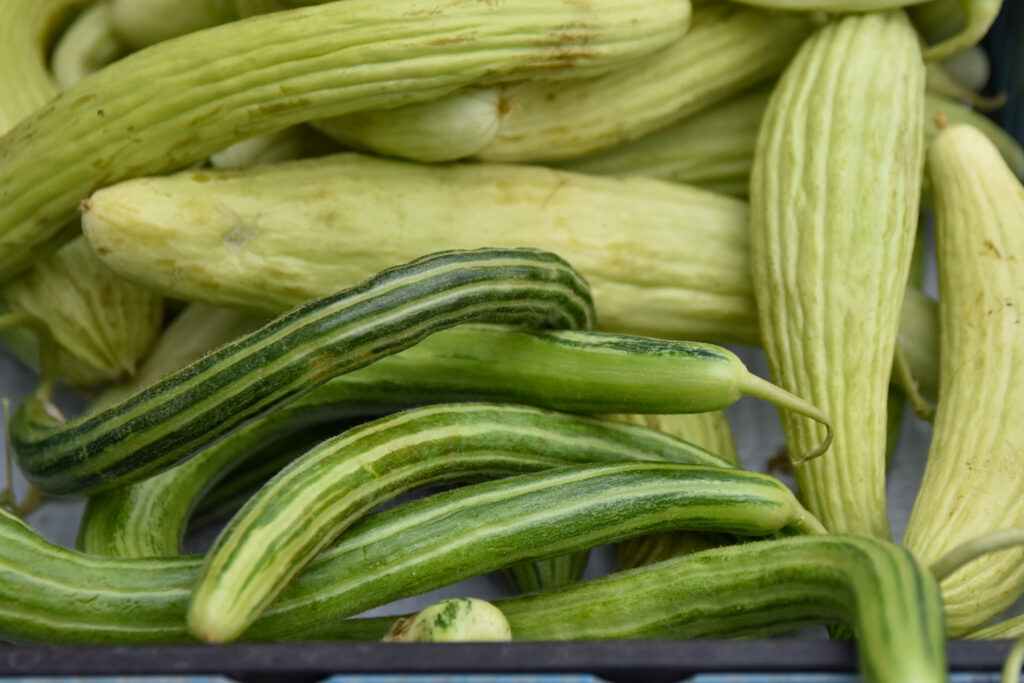
Armenian cucumbers
Armenian cucumbers, which are actually melons, are known by their long, snake-like shape and c-shaped curl. Prized in Armenian cuisine, they can be found in both pale green and striped varieties (the latter sometimes called Painted Serpent). Don’t be fooled by the fuzzy texture of a young Armenian cucumber; they do not need to be peeled before eating, which makes them great for slicing or enjoying them as a snack.
Recipe to try: Armenian Summer Salad by Kate Leahy, John Lee, and Ara Zada, Lavash
Japanese cucumbers
These long and slender cucumbers offer a slight melon flavor with a satisfying crunch. Make thin slices and enjoy them in a sunomono salad, marinated in vinegar or another favorite dressing. True to their name, these cucumbers have been a staple in Japanese cuisine for centuries.
Recipe to try: Stone Fruit Panzanella by John Madriaga, Spruce
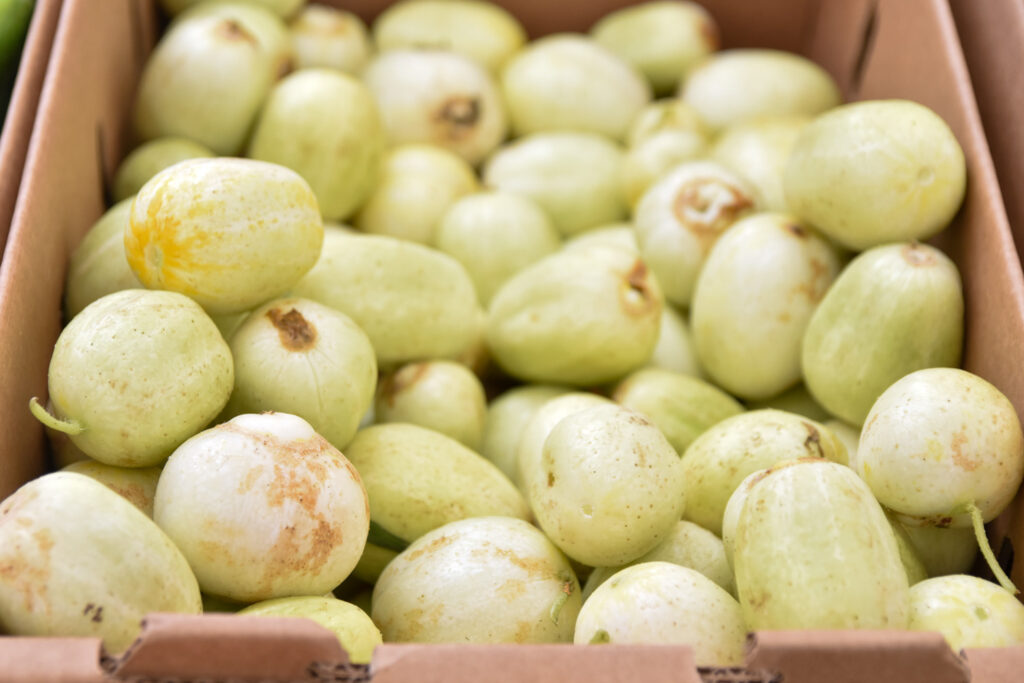
Lemon cucumbers
Their bright yellow skin often has light green spots and stripes, and their small, round shape makes Lemon cucumbers stand out from other varieties. This mild and sweet heirloom is less bitter than other cucumbers and is as versatile as it is tasty. Because of their small size and incredibly thin skin, they are often eaten raw.
Recipe to try: San Francisco Summer Arugula Salad with Blackberries, Avocado, and Cucumber by Linda Shiue, MD, Spicebox Kitchen
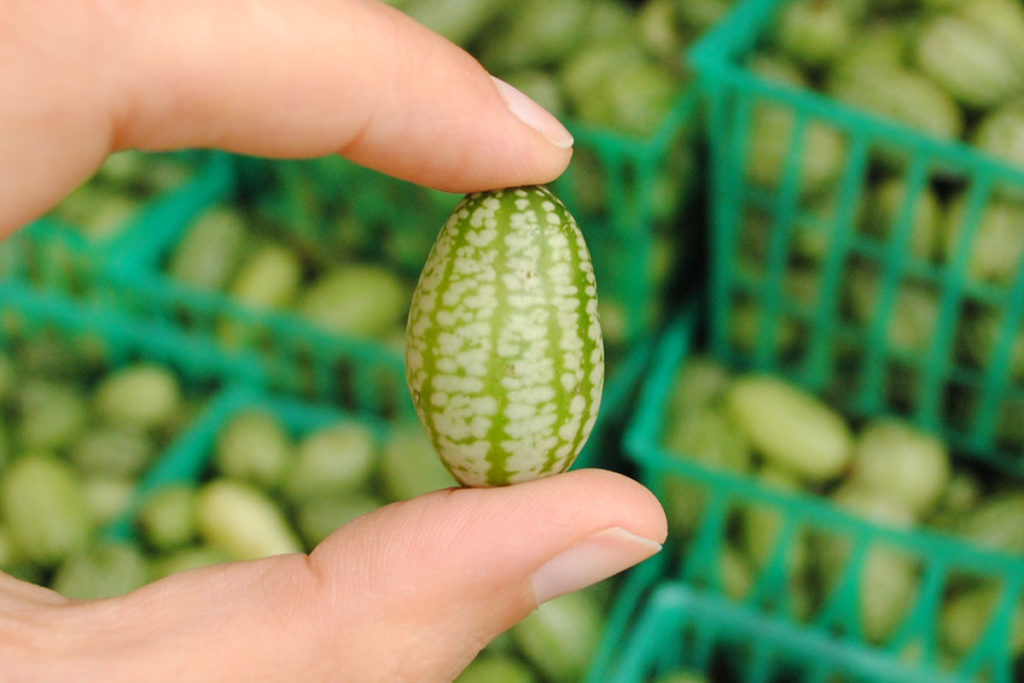
Mexican sour gherkins
Also known as “mouse melons,” these bite-size cucumbers are slightly sour and great eaten raw or pickled. In Central America, they are known as sandita, meaning “tiny watermelon.” You can also try them in juices and cocktails to take advantage of their unique taste.
Recipe to try: Strawberry Ginger Mint Shrub by Michael Carlisi, Barrio
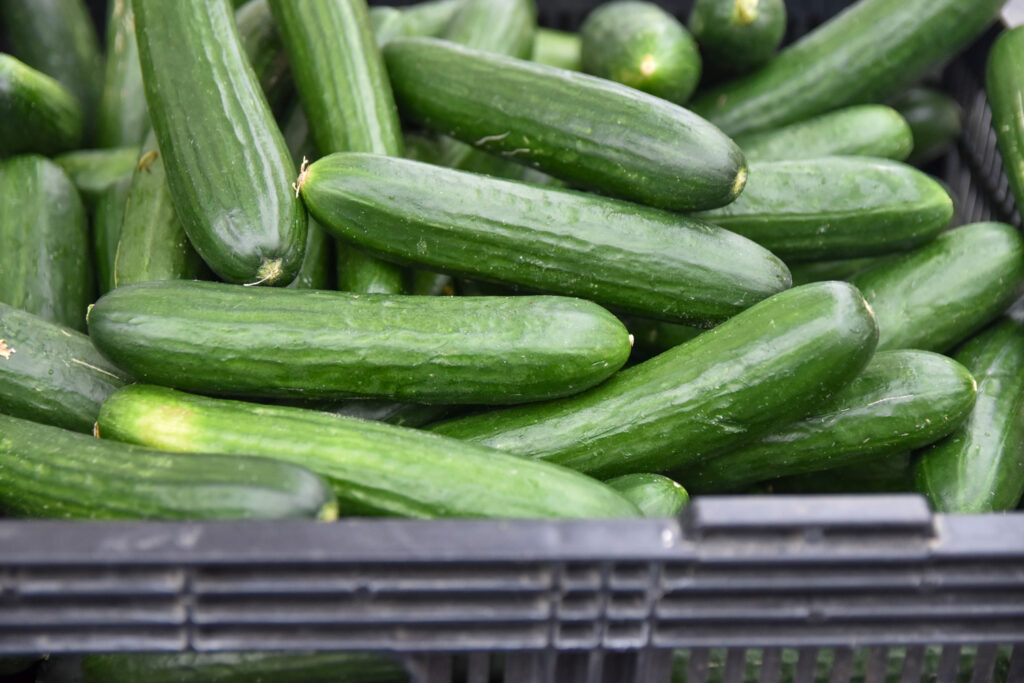
Persian cucumbers
When Persian cucumbers were first developed in the Middle East around 100 years ago, they were intended to have an improved flavor and texture compared to the average cucumber. Their thinner skin allows them to be burpless and easy to digest, and they lack seeds, making them a great option for salads as well as flavoring juices and cocktails.
Recipe to try: Peppercorn-Crusted Ahi Tuna Salad by Nelson German, alaMar
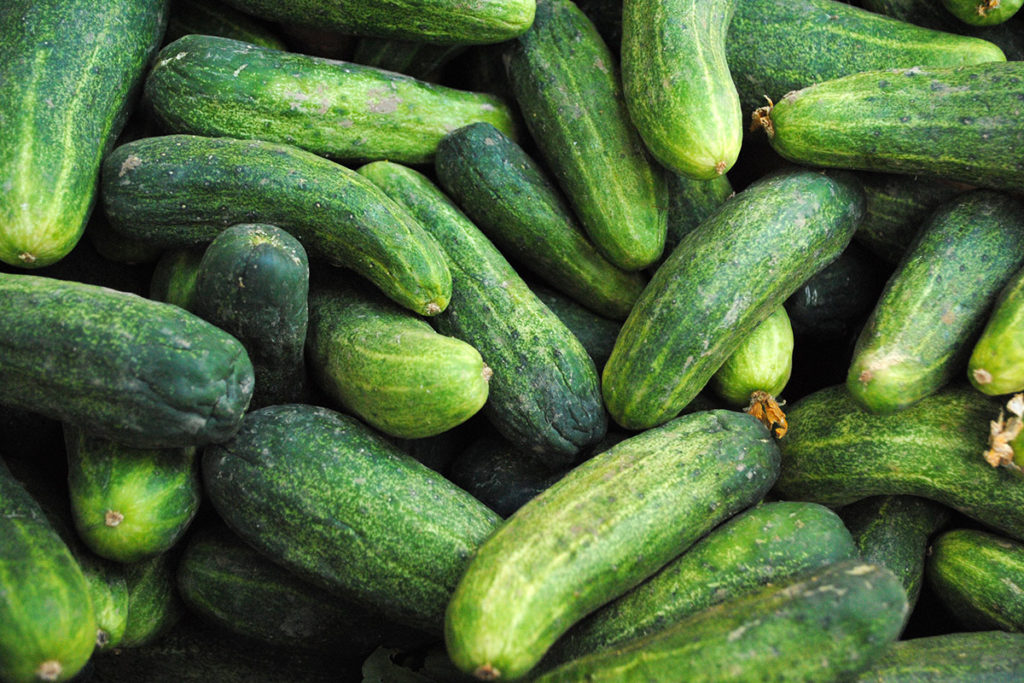
Pickling cucumbers
Pickling cucumbers are usually bumpy, small, and cylindrical, often 4 inches or less in length, which allows them to fit perfectly into a brine- or vinegar-filled jar of your choice. They are usually non-burpless and, compared to burpless cucumbers, have a thicker skin and firmer, less watery flesh that holds up to the pickling process. The small Gherkin is a popular pickling variety, which has a satisfying crunch and tangy flavor when pickled.
Recipe to try: Salt-Brined Cucumber Pickles by Kate Leahy, John Lee, and Ara Zada, Lavash
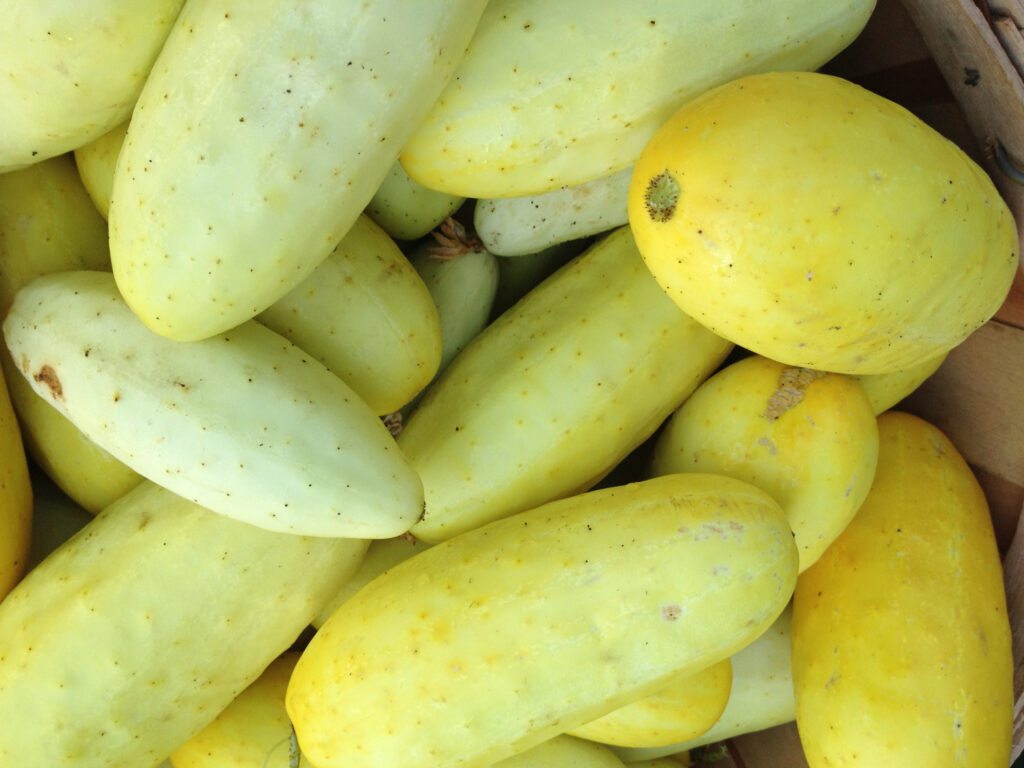
Salt and Pepper cucumbers
Salt and Pepper cucumbers start out white and mature into a bright yellow color with small black and white “salt and pepper” covering the skin. They are best enjoyed either fresh or pickled. When sliced, their firm texture allows you to eat them like chips, dipped into your favorite sauces.
Recipe to try: Basil and Garlic Cucumber Salad by Evan Bloom and Leo Beckerman, Wise Sons Jewish Delicatessen

Slicing cucumbers
This broad category encompasses cucumbers that are best eaten raw, such as sliced into salads. These dark green, burpless cucumbers are often long and slender. One of the more popular varieties, the thick and large Marketmore, gives a sweet flavor that makes it versatile enough to eat both on its own and in sandwiches.
Recipe to try: Smashed Cucumber Dill Salad by Micah Siva, NOSH
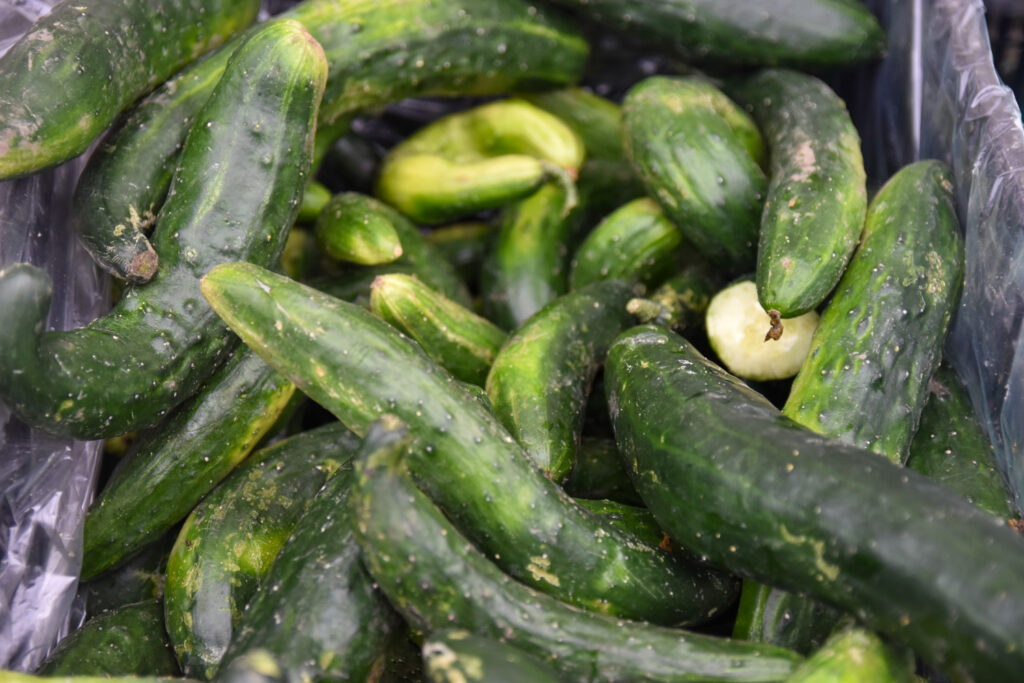
Suyo Long
This northern Chinese heirloom has ridged, bumpy skin and can grow up to 18 inches long. They’re also recognizable by their curved shape. The flesh has many soft seeds that add a delicious texture to salads and soups. Try it with a marinade containing hot pepper flakes or garlic.
Recipe to try: Tomato & Cucumber Kimchi Salad by Polly Sang, Kids Cooking for Life
Seasonal Spotlight
Foodwise’s Seasonal Spotlight program shines a light on the best produce that California farms have to offer at our farmers markets. Join us for free samples, cooking demos, and festivals to celebrate a different peak-season produce item each month. See upcoming events.
Topics: Produce guides
